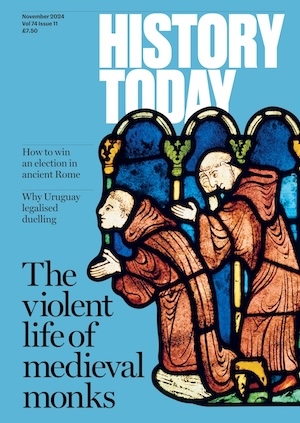Ostrogoths Capture Rome
The Eternal City was captured after a year-long siege on December 17th, 546.

The capture of the ‘Eternal City’ by the king of the Ostrogoths, Totila, was one episode in a complex thirty-year struggle for control of the Italian peninsula between the barbarians who had overthrown the Roman empire in the West and the forces of its surviving section in the East, Byzantium, under its emperor Justinian. But Rome’s fall a few days before Christmas 546 – as a result of some of its hunger-stricken defenders opening the gates to the besieging Goths – was a symbol of the hard times that the ‘Dark Ages’ had brought to what had once been the centre of the civilised world.
After the deposition of the last emperor in Rome by the barbarian chief Odoacer in AD 476, Italy had come under the control of the Ostrogoths who had made their capital in Ravenna.
The most impressive of the Ostrogoth rulers, Theodoric, tried actively to fuse both the remaining Romans and the new Goths into co-operation – though an unorthodox Christian of the Arian school, he left the pope to his own devices in Rome. Unfortunately hopes for a continued rapprochement between Byzantium and the Ostrogoths broke down with Theodoric’s death. Justinian took the murder of the latter’s daughter as a casus belli and sent his most able general Belisarius, to Italy in 536.
Belisarius made rapid progress – taking Rome in December 536 – but the tide turned with problems in the East forcing the Byzantines to concentrate forces there and withdrawing Belisarius. A new Ostrogoth king, Totila, who came to power in 541, won a series of victories – while Belisarius remained in Constantinople, in disgrace through palace intrigue. Belisarius was finally restored to favour by Justinian and sent to Ravenna, but with scant money or reinforcements could do little to block Totila’s momentum. A relief expedition to break the latter’s siege of Rome – where many citizens already talked of surrender to Totila – failed in late summer 546, making inevitable its fall to the Gothic king.
The city Totila captured was a pale shadow of its former self. There were only around 5,000 civilians left – the Roman commander Bessas and his officers had fled and his treasure was captured by Totila. But the symbolism of its capture for a Byzantium intent on re-establishing the old Roman empire was powerful and depressing.
In fact the following April, Belisarius was able to retake the city and eventually after a long and bloody struggle (in which Rome fell again to Totila in January 550) the Byzantines regained control of most of Italy after decisively defeating the Goths and Totila’s successor, Teias, at the battle of Mount Lactarius in March 553. But war and plague had decimated the area around Rome, the Senate had crumbled away, there was a great shortage of labour to administer estates, and disputes between the emperor and the papacy sidelined the city. Two years after Justinian’s death in 565, another Germanic people, the Lombards, overran Italy, putting paid to any hope that the days of the Caesars could be restored to the city of Romulus and Remus.




